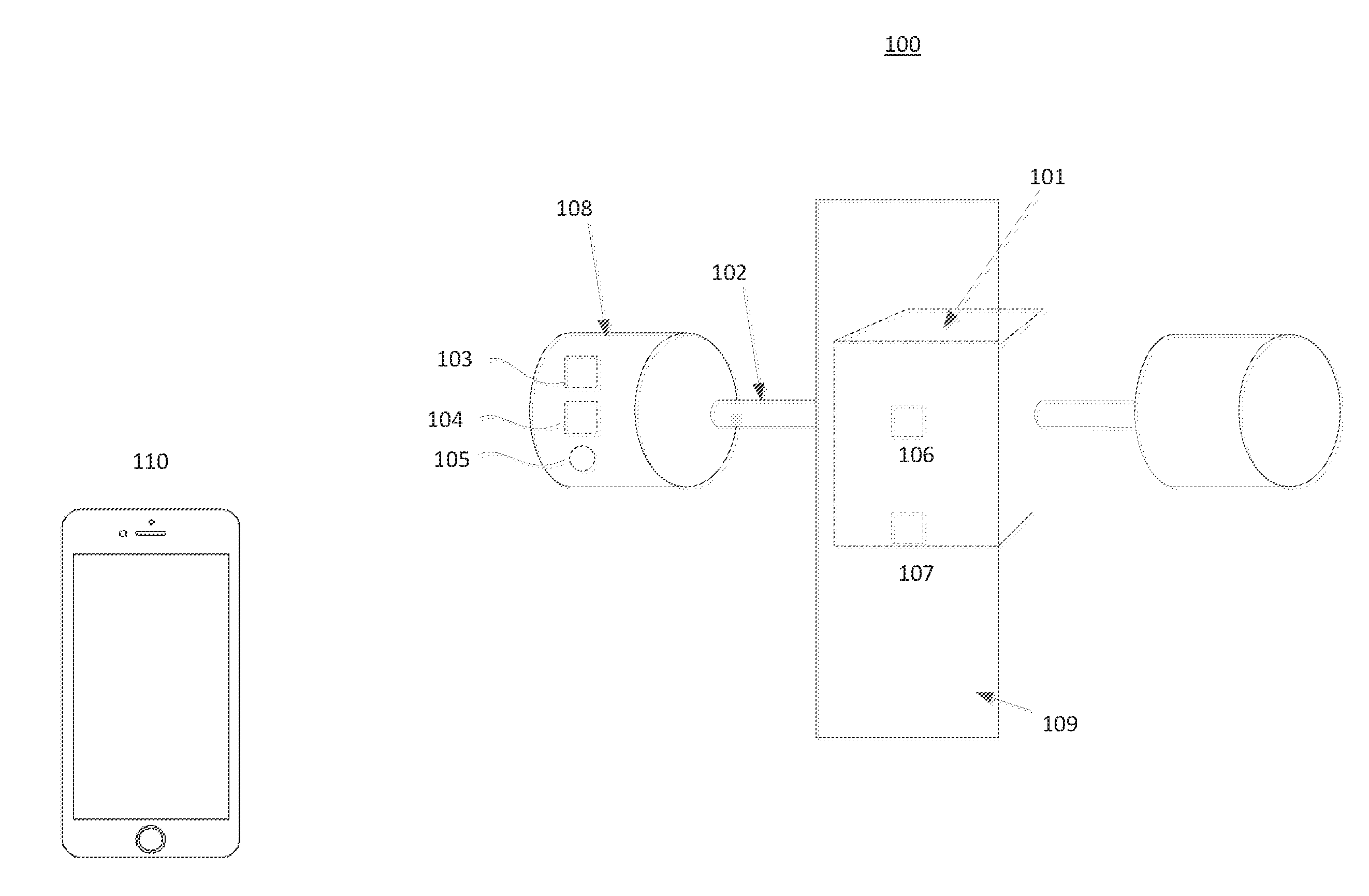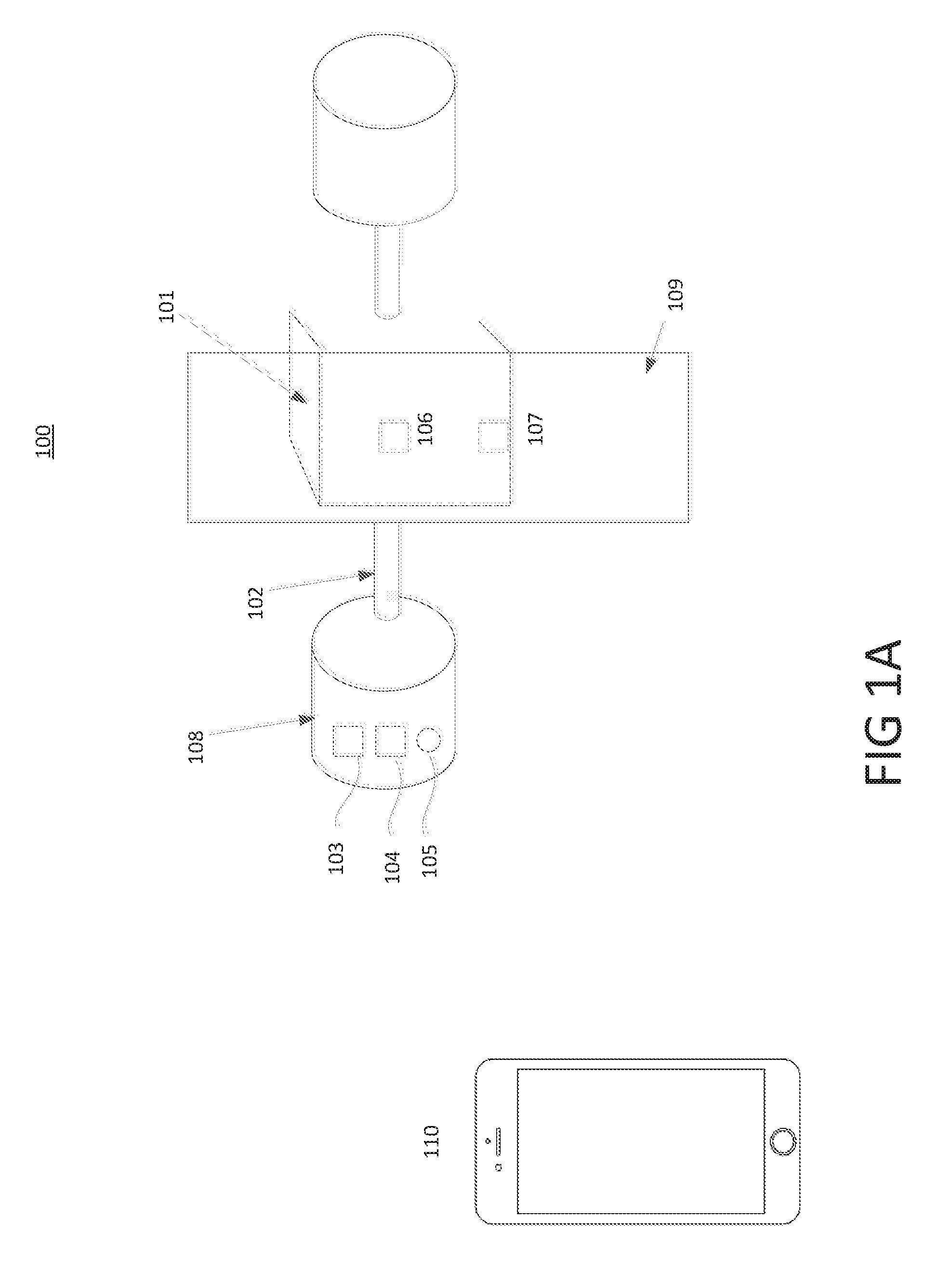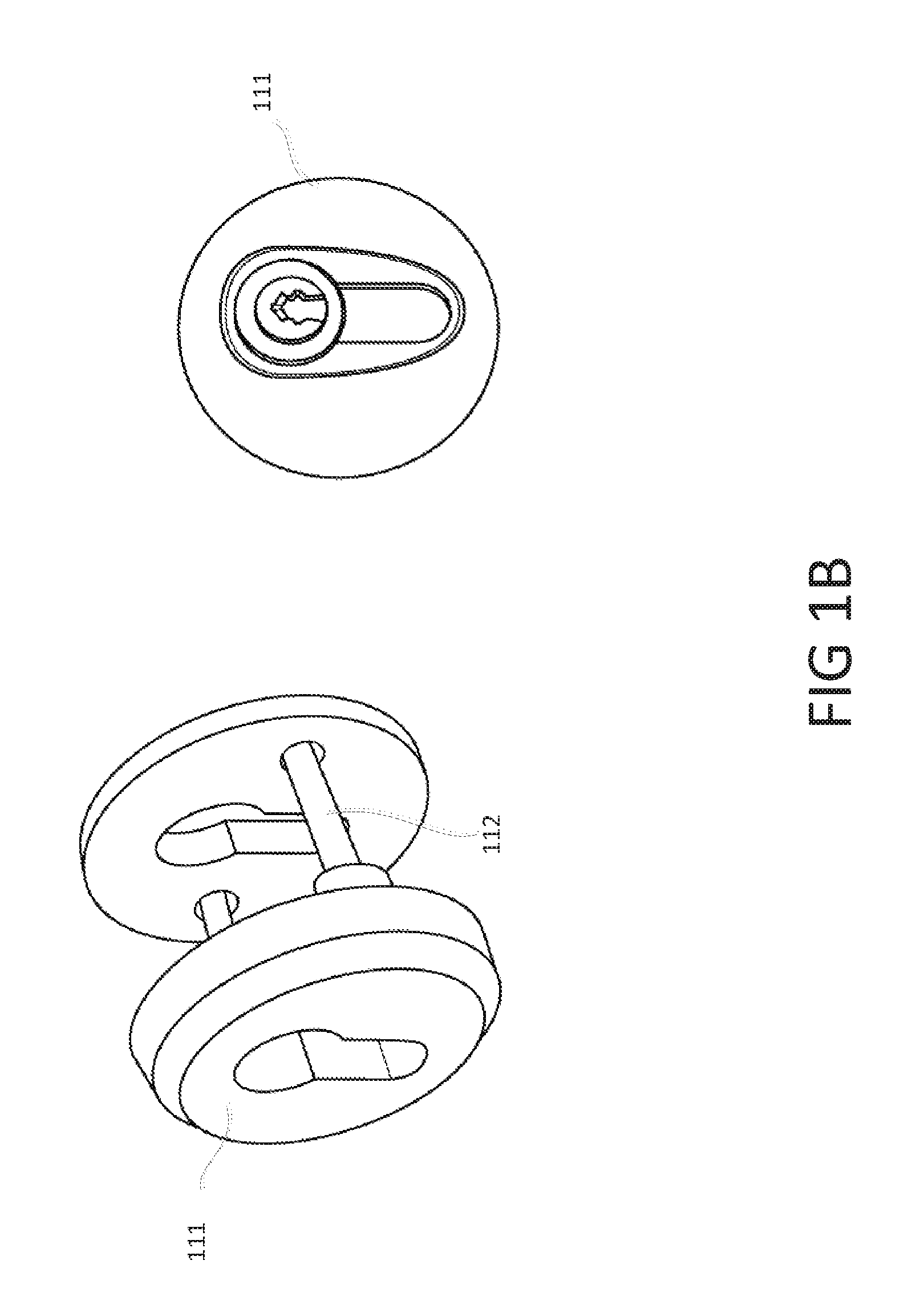However, these usually require complex and intrusive installation processes, such as drilling or
cutting into a door frame for example.
As a result, such surface-mounted locks may be as difficult to remove as they are to install.
Moreover, surface-mounted locks typically rely on batteries as a power source.
However, their dependency on batteries renders the locks vulnerable to battery drainage or failure.
Although many surface-mounted locks have a hidden mechanical key override in case of battery failure, these overrides are unsecure because they may be easily bumped, picked, or drilled.
Once bumped, picked, or drilled, other redundant security features intended to enhance the lock's security, such as biometric scanners, become futile.
Cylinder-based smart locks with RFID button locks are likewise vulnerable to vandalism, in part, because of the way they are installed.
Specifically, some mechatronic cylinders may become disabled if an unwanted trespasser simply applies a large amount of rotational force to the button, allowing the unwanted trespassers access to a user's home.
However, these power sources 105 may lose charge or suffer from other failures unexpectedly.
Although some lock systems have added alternative supplementary power sources to power the inside button 108 from the outside facing door surface, these devices are often located in the room that has been secured by the lock or are not readily available.
Other drawbacks to using RFID cylinder-based smart locks exist.
Generally, RFID cylinder-based smart locks use passive RFID technology, which is known to be vulnerable to hacking or
reverse engineering.
Moreover, they lack flexibility in situations where a user's device 110 (e.g., their RFID-enabled card or RFID-enabled
smart phone) is lost or stolen.
Because a
system administrator and locksmith would have to repeat this process for each lock, the cost of updating such a
system can grow significantly if the lost or stolen RFID-enabled card was configured to access a large number of locks.
Further, because these locks do not typically provide an alternative redundant access channel for opening the lock, a user may be prevented from accessing
a site and locked out until a replacement RFID-enabled card has been provided, the RFID-enabled lock has been updated, or someone else with credentials to the lock has been found.
Similarly, users who rely on their RFID-enabled smartphone may be locked out if their phone battery is depleted and the phone is OFF, because the RFID features may not work.
Thus, many solutions that only rely on RFID-enabled smartphones are not feasible.
However, due to the size, price, and power constraints of the components used in biometric readers or code-based solutions, the quality and level of security provided by these alternative access channels may be limited.
Another drawback to these systems is the lack of control for temporally restricting access to a lock.
That is, once access to a lock has been given to a user (e.g., by entering his or her passcode or
fingerprint onto the lock), it is difficult to control when the user can have access to the lock.
Thus, most of these devices also do not keep usage logs of various events or activities that provide information on the lock's usage.
Accordingly, lock owners or
system administrators are typically unable to analyze information about when a particular lock was used and who attempted to use the lock.
However, these locks suffer from similar power limitations as those described above.
Specifically, the
wireless communication devices in these locks consume a significant amount of power when sending and receiving data.
Thus, wireless communication devices powered by batteries may only be operated for limited amounts of time before becoming drained and depleted.
Mechanical locks are however, by their design, prone to
attack by other tools that may allow an ill-intended person to
gain access to premises by breaking, tearing, drilling or
cutting the cylinder with various tools available from the trade.
However, anti-drilling roses are typically impractical to add to mechanical cylinders as they usually have a freely rotating anti-drilling protection disc that prevents the lock and key from being used as normal.
Moreover, anti-drilling roses are not considered aesthetically pleasing, and therefore, are not often used despite the enhanced security protection they provide.
Thus, they are not protected against sideway thrusts of force, such as a heavy sideway thrusts of a hammer, which can dislodge the button from the cylinder body.
When a button is dislodged from the cylinder body, the lock may be broken and inoperable, or the lock may be broken and an ill-intended user may
gain access to the premises.
However,
Bluetooth communication may also be vulnerable to hacking as well, because ill-intended persons may intercept and decode the
Bluetooth signals being communicated between the phone and lock.
 Login to View More
Login to View More  Login to View More
Login to View More 


